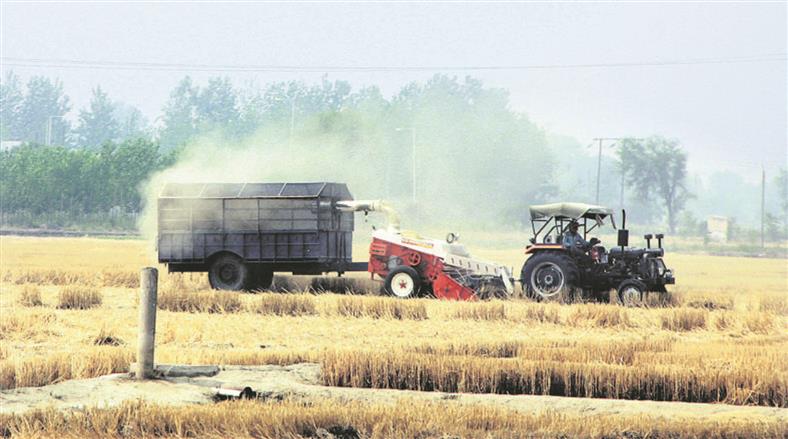
THE relevance of the time-tested wheat-paddy cropping pattern has come under scrutiny during the ongoing debate over the new farm laws.
Vishav Bharti
THE relevance of the time-tested wheat-paddy cropping pattern has come under scrutiny during the ongoing debate over the new farm laws.
Experts who has been following and participating in debates on crop diversification are of the view that considering the Centre’s attempts to tinker with the procurement system and the alarming decline in the water table, Punjab needs to diversify to an alternative cropping pattern.
 The government wants crop diversification either by pushing farmers to distress or through a ‘surgical strike’ by bringing in laws. “Both ways will be disastrous,” says economist Prof Ranjit Singh Ghuman.
The government wants crop diversification either by pushing farmers to distress or through a ‘surgical strike’ by bringing in laws. “Both ways will be disastrous,” says economist Prof Ranjit Singh Ghuman.
It was around a decade ago that the Union government emphasised the need for diversification. “But they have not done much in terms of policy intervention,” says Ghuman.
However, the debate on diversification in Punjab is much older. A committee headed by eminent economist Sardara Singh Johl, constituted in 1986, had recommended that at least 20 per cent area under wheat and paddy be shifted to other crops, especially fruits and vegetables. Since then, various committees have been set up, including another led by Johl in 2002, and multiple reports have been submitted, but to no avail. Another agriculture expert, Prof GS Kalkat, brought in the state’s first-ever agriculture policy in 2013. He asked the government to establish the agriculture price stabilisation fund so that farmers could diversify to other crops. But hardly anybody listened. Prof Kalkat died in 2018 with the regret that nobody paid heed to his suggestion on diversification.
In 2018, the Punjab Farmers’ Commission submitted a report on diversification, but nothing changed on the ground.
Veena Sharma, in a research paper on crop diversification in Punjab, writes that the state ushered in the Green Revolution by making big strides in foodgrain production. Now, Punjab is a leading producer of wheat, paddy, cotton and sugarcane. It contributes immensely to the Central pool as far as the procurement of wheat and rice is concerned. “The need of the hour is to diversify agriculture to bring in a second Green Revolution. The great potentiality that will raise the income of farmers by raising farm productivity in non-food crops is yet to be realised,” the paper says.
But the question remains: how to motivate farmers to diversify to other crops? Experts say that the government needs to go beyond promises and sermons. “The only way to promote diversification is to follow the course of history. The government has to promote other crops just the way it promoted wheat and paddy,” says Ghuman.
He says that the government should not only continue MSP for wheat and paddy but also extend it to other crops. “Farmers will prefer only those crops which guarantee them assured income. So, the government should also ensure procurement of other crops,” he adds.
Baldev Singh Shergill, a young economist, agrees: “If there is no market, for whom will the farmer produce? From an assured purchaser, the government is opting for the role of facilitator. So, diversification is going to remain a pipe dream till the government changes it role.”
Experts have warned that the arm-twisting of states by the Centre would have disastrous consequences.
“First, we need to know how much diversification is required. The Centre’s hard line on the three laws could create a food crisis within a decade,” says Ghuman.
A report by the United Nations Organisation has predicted famines of ‘biblical proportions’ and urged the UN Security Council to ‘act fast’. The World Food Programme (WFP) reported that the global spread of Covid-19 sparked off “the worst humanitarian crisis since World War Two”. The WFP has warned of more frequent natural disasters and changing weather patterns, saying that “we are already facing a perfect storm”.
With millions of people in conflict-scarred nations teetering on the brink of starvation, famine is a ‘very real possibility’, leaving no room for complacency even in ‘food-secure’ nations like India.
Send your feedback to [email protected]
Join Whatsapp Channel of The Tribune for latest updates.



























